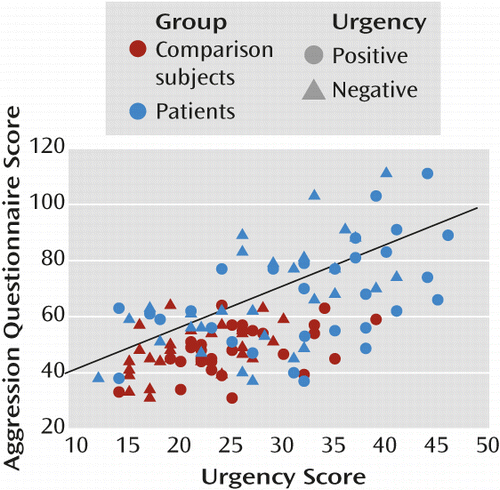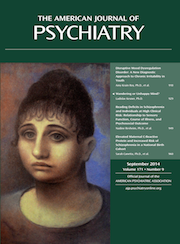In This Issue


More Urgency and Aggressive Behavior in Schizophrenia
Two studies highlight potentially remediable aspects of schizophrenia that interfere with social functioning. Hoptman et al. (CME, p. Original article: 939) pinpoint urgency—rash action driven by strong emotion—as the type of impulsivity underlying aggression in schizophrenia patients. Urgency can be fueled by either positive or negative emotion and correlates with general symptoms, such as anxiety. It is associated with brain regions mediating response inhibition and conflict monitoring, notes Szeszko in an editorial (p. Original article: 897). The severe reading deficits (figure) of schizophrenia patients tested by Revheim et al. (p. Original article: 949) were due to both visuospatial and phonological impairment, but not overall cognitive dysfunction. Reading impairment did not appear to reflect poor premorbid reading ability.
Maternal C-Reactive Protein and Schizophrenia in Offspring
Pregnant Finnish women with high levels of C-reactive protein, a marker of inflammation, were more likely to have offspring who developed schizophrenia by early adulthood. Canetta et al. (CME, p. Original article: 960) compared archived maternal blood serum specimens for 777 schizophrenia patients and control subjects. The connection between inflammation and stress, state Cannon et al. in an editorial, (p. Original article: 901), indicates that psychiatrists need to be involved to help pregnant women manage stress, anxiety, and depression, to protect both mother and child.
Because disruptive mood dysregulation disorder (DMDD) is a new diagnosis, treatment decisions are based on trials for childhood disorders that share major characteristics, such as irritability and temper outbursts. Stimulants often enhance frustration tolerance and reduce aggression in children with DMDD, and side effects are minimal. Roy et al. (p. Original article: 918) also suggest concurrent psychosocial interventions: parent training for young children and cognitive-behavioral treatment for older youths. If the combination of stimulant and psychosocial treatment is insufficient, a mood stabilizer or atypical antipsychotic may be considered, but the side effects are significant.
More than 40% of youths with bipolar disorder ages 7–17 either remained largely euthymic over the following 4–8 years or were improving by the end of follow-up. Birmaher et al. (CME, p. Original article: 990) identified clinical variables associated with a generally euthymic course: later onset, less severe mood symptoms, fewer subdiagnostic episodes, fewer suicide attempts, and less sexual abuse. In an editorial, Carlson (p. Original article: 910) cites other research indicating good outcomes in many children with bipolar disorder and high rates of attention deficit hyperactivity disorder in children who remain ill.
Genetic Mechanisms of Abnormal Brain Development in Schizophrenia
Schizophrenia’s cognitive deficits appear to involve low levels of GAD67, a key enzyme for synthesizing the inhibitory neurotransmitter γ-aminobutyric acid (GABA). Expression of the GAD67 gene can be regulated by the transcription factor Zif268, and Kimoto et al. (p. Original article: 969) found that both GAD67 and Zif268 mRNA levels were low, and correlated, in brains of schizophrenia subjects. Paterson et al. (p. Original article: 979) demonstrated that several neuregulin 1 (NRG1) molecules show patterns of temporal regulation consistent with a role in developmental abnormalities in early childhood. A single-nucleotide polymorphism (SNP) in one of the molecular variants has already been implicated in impaired neurocognition and sensory processing in schizophrenia. Editorialist Sohal (p. Original article: 906) points out the increasing convergence between the molecular evidence for genetic risk and the physiological evidence for decreased inhibitory function in schizophrenia.



